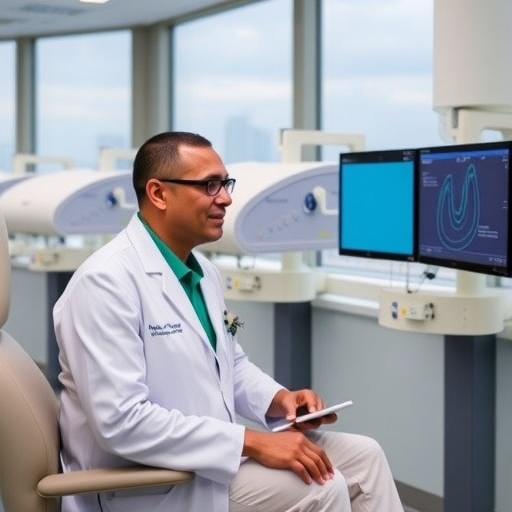WASHINGTON, D.C., December 6, 2016 – Flow-lithography is a lithographic method for continuously generating polymer microstructures for various applications such as bioassays, drug-delivery, cell carriers, tissue engineering and authentication. A team of researchers in Korea has demonstrated the use of a wobulation technique to enhance the resolution of flow lithography produced nanostructures.
The technique uses a Digital Light Processing (DLP) projector, similar to those used in projection TVs, to generate lithographic patterns. By overlapping low-resolution frames of the DLP projector a much higher-resolution frame can be produced. The technique described in this week's journal, Applied Physics Letters, by AIP Publishing, could improve 3-D printer performance.
At the heart of the DLP projector is a Digital Micromirror Device (DMD), a small electro-mechanical device which is fabricated through a Micro Electro Mechanical System (MEMS) process. The DMD is essentially an array of very small, controllable mirrors. By reflecting UV light from the mirror array and dynamically controlling each pixel of the array, various UV patterns are projected.
The resolution, however, is strictly limited the pixel size of the DMD. Increasing the resolution of DMD to match that of other lithographic techniques is a challenge that was addressed by using this wobulation technique.
"Wobulation works much like when two transparent, plaid backgrounds are stacked one above the other, the result would be a denser-looking plaid, but the square shape of the plaid is still obvious," said Wook Park, a physicist at Kyung Hee University in Seoul, South Korea. "If we instead shift one layer a bit with respect to the other, the ragged edge of the plaid pattern in much less obvious. In much the same way, we tried to better define the lithographic edge by exposing a UV pattern twice, staggering the second exposure with respect to the first, and by cutting the exposure time of each layer in half. Applying this wobulation technique we achieved an effect just as if a higher-resolution pattern was exposed for the whole exposure time."
There were several benefits to this technique. For example, in the past high, magnification lenses were used to improve lithographic resolution, but this narrowed the field of view.
With this approach, resolution is enhanced while maintaining the same field of view, reducing roughness without reducing throughput.
The next step is to create more complex, three-dimensional hydrogel microstructures that can become a customized bio-fabrication platform. This will allow the development of a 3-D printer that combines a microfluidic device and 3-D printing techniques, providing the capability to continuously produce microcarriers, incorporating biomaterials. Application of the wobulation technique will enable the DLP-based 3-D printer to produce the more sophisticated microstructures needed for these applications.
The team looks forward to realizing the potential of this technique. "One of the biggest challenges in developing 3-D printers is improving the resolution," Park said. "By applying wobulation to address that challenge, we expect to be able to improve the performance of already commercialized DLP 3-D printers."
###
Media Contact
AIP Media
[email protected]
301-209-3090
@jasonbardi
http://www.aip.org
############
Story Source: Materials provided by Scienmag




